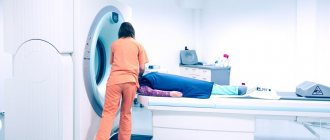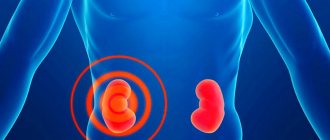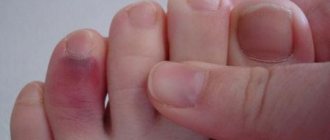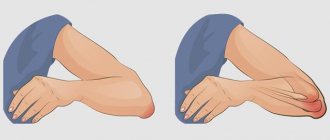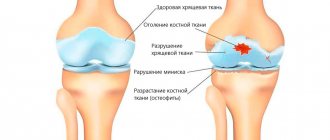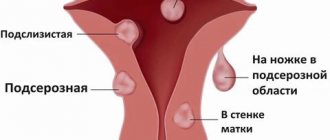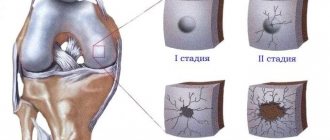Types of neuralgia
Neuralgia is divided into:
- Neuralgia of the spinal (intercostal) nerves
- Neuralgia of the cranial (glossopharyngeal, trigeminal) nerves
- Neuralgia of the femoral nerves
In our clinic we treat all types of neuralgia, using the most modern means and methods.
Trigeminal neuralgia
Most often, this disease manifests itself in people after 40 years of age, women suffer more often. The symptom is acute pain that is difficult to tolerate. It appears in one half of the face (less often in two) and can last several minutes or appear in the form of separate “shooting” attacks. It may appear during chewing, brushing teeth, or during irritation of certain special points on the face. At the moment of pain, numbness of the facial skin and twitching of the muscles on the affected side are felt.
The cause is often compression of the nerve by surrounding tissues.
Causes of trigeminal neuralgia:
- Hypothermia of the face
- Aneurysm of one of the arteries of the skull
- Abnormal arrangement of cerebral vessels
- Removal of a tooth
- Chronic infections in the facial area (sinusitis, caries)
- Brain tumors
Intercostal neuralgia
The cause of acute chest pain is intercostal neuralgia. Its symptoms resemble an attack of myocardial infarction and often “scare” patients. The pain is often girdling in nature and can occur unexpectedly, but more often when changing body position, coughing, or taking a deep breath. There is numbness or “crawling” in the affected area.
The causes of intercostal neuralgia are:
- Chest injuries
- Hypothermia of the back or chest area
- Uncomfortable body position (which persists for a long time) or a sharp turn of the body
- Various diseases of the thoracic spine
If all the symptoms are present, and blisters with clear liquid appear on the skin, then the cause is shingles.
Occipital neuralgia
Occipital neuralgia manifests itself as acute pain in the neck and/or back of the head on one or both sides. It can occur suddenly, during some sudden movement. The pain may be felt behind the ears and even radiate into the eyes.
The main causes of the development of occipital neuralgia are:
- Osteochondrosis
- Tumors in the cervical vertebrae
- Hypothermia in the back of the head or neck
- Cervical spine injuries
It can occur during a sharp turn of the head against the background of absolute health.
Neuralgia of the external cutaneous nerve of the thigh
If you feel shooting pain along the outer surface of the thigh, then this is a manifestation of neuralgia of the external cutaneous nerve of the thigh. When moving, the attack intensifies, numbness and burning appear.
Neuralgia of the pterygopalatine ganglion
An attack of the pterygopalatine ganglion is difficult. It begins unexpectedly (often at night) and can last for several hours. It manifests itself as a burning pain that is difficult to endure in the area of the eyes, temples, neck, and soft palate. The pain is bursting in nature.
Neuralgia of the glossopharyngeal nerve
Neuralgia of the glossopharyngeal nerve is not common. It manifests itself as pain in the throat, which spreads to the lower jaw and ear.
Prevention
It is unlikely that the disease will be prevented 100%, but the risk of its occurrence or exacerbation can be reduced. Preventive actions:
- avoid hypothermia;
- in winter, when there is a cold wind, wear scarves that cover the face;
- do not sleep in an uncomfortable position or tight clothes;
- carefully select crutches;
- do exercises for the spine;
- monitor blood sugar levels;
- do not engage in heavy physical work;
- try to avoid traumatic situations;
- visit an immunologist if the level of immune defense is low (manifested by frequent acute respiratory viral infections, colds, tonsillitis, shingles);
- If a drunk person falls asleep with his arm under him, then there is a high risk of pinching the nerves - the limb must be positioned freely.
Neuralgia is a serious pathology, difficult to tolerate by patients due to the severity and suddenness of attacks of burning pain, sometimes lasting for hours. During treatment, the doctor tries to completely eliminate the disease and prevent it from becoming chronic, so it is important to seek medical help as early as possible.
Diagnosis and treatment of neuralgia
To make a diagnosis of neuralgia, you need to consult a neurologist. Diagnosis is carried out on the basis of the characteristic symptoms of the disease and additional examination methods, which include nuclear magnetic resonance, computed tomography and other methods.
Treatment methods for neuralgia are selected depending on the causes that led to the development of the disease and the affected nerve.
To relieve the pain of neuralgia, medications that belong to the group of non-steroidal anti-inflammatory drugs, antidepressants, antiepileptic drugs and drugs that have a local analgesic effect are used.
Physiotherapy, acupuncture, therapeutic exercises and massage are used as general treatment methods, which have a good therapeutic effect.
For the treatment of neuralgia, carboxytherapy and mesotherapy methods with painkillers and drugs that improve blood circulation are also very effective. The basic treatment method for trigeminal neuralgia is transcutaneous electrical nerve stimulation (Cefaly).
If these methods are ineffective, then surgery is recommended, the purpose of which is to remove the tissue that puts pressure on the nerve. The canal through which the nerve passes may widen. All this leads to the disappearance of pain and complete relief from neuralgia.
Our clinic employs highly qualified specialists who effectively combine medicinal methods with physiotherapy, which helps to achieve good results in the treatment of neuralgia and significantly improve the patient’s quality of life.
Survey
Diagnosis of neuralgia is the competence of a neurologist or therapist.
Neuralgia is not confirmed using laboratory or instrumental research methods. In most cases, characteristic attacks allow a diagnosis to be made. To exclude other diseases and confirm inflammation, the doctor may prescribe:
- ECG, chest X-ray, ultrasound of internal organs - if intercostal nerves, solar plexus are affected;
- general, biochemical blood tests - detect inflammation;
- ENMG (electroneuromyography) - shows the extent of nerve involvement in the process, as well as whether there are disturbances in the conduction of impulses to the muscles.
Our specialists
Tarasova Svetlana Vitalievna
Expert No. 1 in the treatment of headaches and migraines. Head of the Center for the Treatment of Pain and Multiple Sclerosis.
Somnologist.
Epileptologist. Botulinum therapist. The doctor is a neurologist of the highest category. Physiotherapist. Doctor of Medical Sciences.
Experience: 23 years.Derevianko Leonid Sergeevich
Head of the Center for Diagnostics and Treatment of Sleep Disorders.
The doctor is a neurologist of the highest category. Vertebrologist. Somnologist. Epileptologist. Botulinum therapist. Physiotherapist. Experience: 23 years.
Palagin Maxim Anatolievich
The doctor is a neurologist. Somnologist. Epileptologist. Botulinum therapist. Physiotherapist. Experience: 6 years.
Romanova Tatyana Alexandrovna
Pediatric neurologist. Experience: 24 years.
Temina Lyudmila Borisovna
Pediatric neurologist of the highest category. Candidate of Medical Sciences.
Experience: 46 years.
Zhuravleva Nadezhda Vladimirovna
Head of the center for diagnosis and treatment of myasthenia gravis.
The doctor is a neurologist of the highest category. Physiotherapist. Experience: 16 years.
Mizonov Sergey Vladimirovich
The doctor is a neurologist. Chiropractor. Osteopath. Physiotherapist. Experience: 8 years.
Bezgina Elena Vladimirovna
The doctor is a neurologist of the highest category. Botulinum therapist. Physiotherapist. Experience: 24 years.
Drozdova Lyubov Vladimirovna
The doctor is a neurologist. Vertebroneurologist. Ozone therapist. Physiotherapist. Experience: 17 years.
How to stay healthy
The main reason for the appearance of diseases of this type is disruption of the nervous system. If they have not been a pathology since childhood, then their occurrence can be triggered by chronic fatigue, constant stress at work and at home, bad habits, as well as a lack of vitamins in the body. To prevent the development of neurological diseases, you just need to:
- exercise – preferably regularly, and not a couple of months of intense exercise a year in order to “lose weight by summer”;
- rest fully - this means healthy sleep of at least 8 hours a day (at night, not during the day);
- eat right - it is with food that we get all the nutrients the body needs, so watch what’s on your table;
- walk in the fresh air - it doesn’t matter whether you decided to take a walk after work or deliberately went to the park. If the weather permits, and things can wait 15–20 minutes, then why deny yourself the pleasure.
Alcohol and tobacco abuse can also cause neurological diseases. Toxic substances have a destructive effect on the entire body as a whole. Do you smoke? Drop it! The body will thank you with good health and excellent mood. As for alcohol, nothing bad will happen from a glass of good wine with dinner. The main thing is to know when to stop.
Read also
Myelitis
Myelitis is a neurological pathology characterized by inflammation of the gray and white matter of the spinal cord, which leads to damage to myelin (the substance that forms the sheath of nerve fibers) and the axon (the process...
Read more
Amyotrophic lateral sclerosis (ALS)
– “One of the most terrible human diseases... 3 letters...” – “Cancer” – “Not suitable...” Yes, dear ones, there is something worse than cancer. And this disease is called amyotrophic lateral sclerosis or...
More details
Lambert-Eaton syndrome
The first description of the disease in the literature appeared in 1953. J. Anderson described a case from practice: a 47-year-old man with lung cancer experienced symptoms similar to myasthenia gravis. After tumor removal...
More details
Consequences of traumatic injuries to the skull, spine, brain and spinal cord
Traumatic brain injuries, or traumatic brain injuries, are damage to the brain that impair brain function. Brain injuries are divided into two large groups - closed...
More details
Myasthenia gravis
MYASTHENIAS – a disease associated with a disruption of the immune system, as a result of which antibodies are produced against the body’s own tissues involved in the transmission of nerve impulses, which...
More details
Neurology in children
A difficult area in medicine that requires maximum care and highly qualified specialists. Neurology in children differs significantly from diseases in adults. The thing is that at a very young age the disease develops differently and is accompanied by unexpected symptoms and signs, which sometimes cannot even indicate its presence.
Neurological diseases in children can result from:
- injuries after difficult childbirth;
- unhealthy lifestyle of a pregnant woman (smoking, drug use, alcohol);
- hypoxia in the womb;
- predisposition - if the parents have genes for the disease;
- infections;
- the special location of the fetus in the womb (this often includes the entwining of the umbilical cord around the baby’s neck).
Although neurological diseases in children can appear at any age, most of them can be detected at the earliest stages and even during pregnancy. Early diagnosis allows you to start a course of treatment on time, which increases the chances of a full recovery and further normal development.
It is for this reason that young parents are strongly advised to show their child to the pediatrician regularly. In case of minimal deviations, he will refer you for examination to a neurologist and other specialists.
Classification
According to etiology (nature of origin), neuralgia can be:
- Primary (essential) – occurs as an independent disease, without accompanying disorders.
- Secondary (symptomatic) - develops as a result of other pathological processes (tumors, inflammations), due to which pressure is exerted on the nerve area.
Neuralgia is also classified according to the location of the affected nerve:
- facial;
- occipital;
- intercostal;
- sciatic nerve;
- glossopharyngeal nerve;
- pterygopalatine node.
Serious life-threatening symptoms
Severe, debilitating pain can make breathing very difficult. Pain can also occur for life-threatening reasons, such as a heart attack. You should seek help if any of these symptoms appear:
- Chest pain that may spread to the jaw, shoulder, left arm, or back.
- Pressure in the chest, cramps and a feeling of rupture.
- Cough with yellow-green mucus
- Cardiopalmus.
- Breathing problems, such as severe shortness of breath and inability to breathe deeply.
- Severe abdominal pain.
- Severe chest pain when breathing and coughing.
- Confusion, dizziness, fainting.
Causes
The main causes of neuritis:
- infectious (viruses, bacteria, their toxins);
- exposure to toxic factors
- metabolic disorders (diabetes mellitus, deficiency of vitamins B1 and B6);
- allergic reactions;
- injuries;
- oncological diseases;
- hereditary diseases;
- diseases of the spine leading to mechanical compression of the nerve trunk (intervertebral hernia, tunnel syndromes, etc.).
The mechanism of nerve damage when exposed to various unfavorable factors is associated with the launch of a cascade of inflammatory reactions. Swelling of the nerve trunk occurs, damage to the myelin sheath and subsequently to the axial cylinder, which in turn leads to the death of the nerve cell.
Make an appointment
